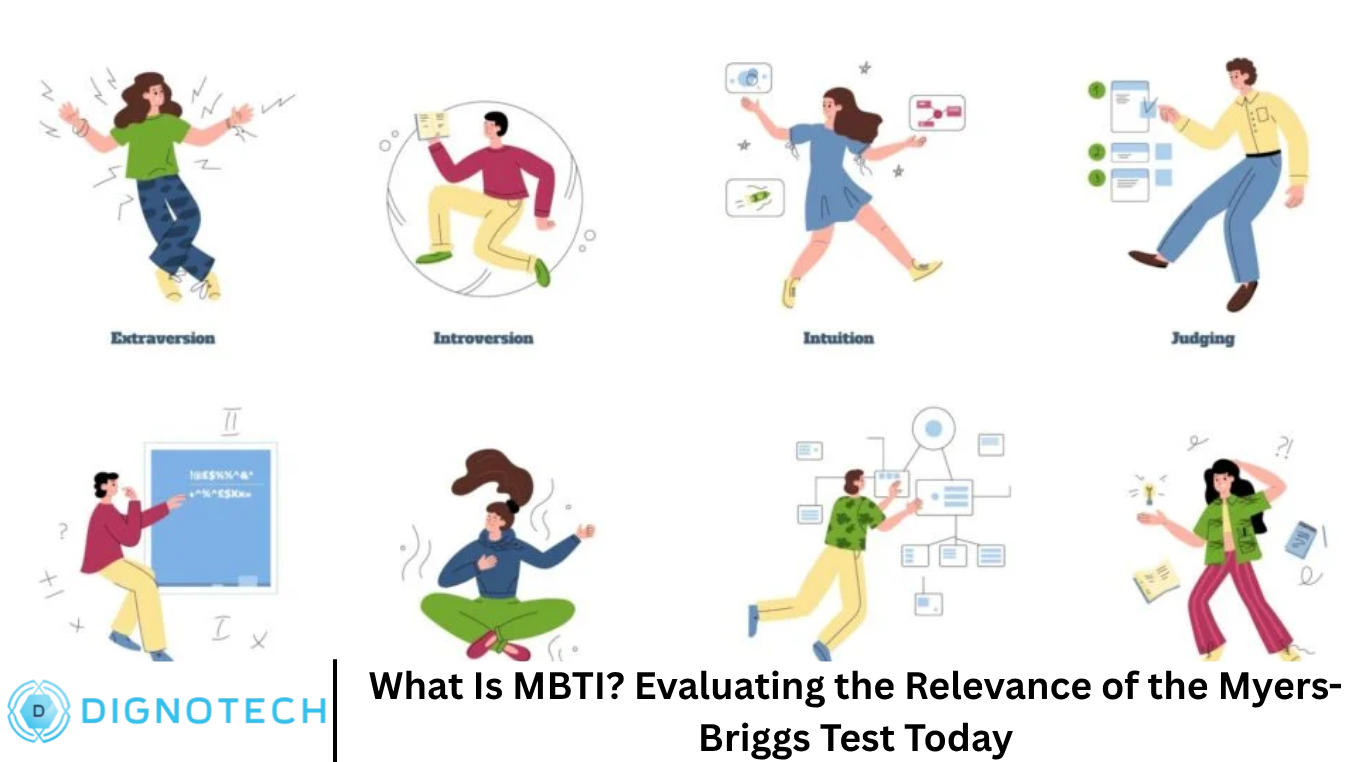What Is MBTI? Evaluating the Relevance of the Myers-Briggs Test Today

The Myers-Briggs Type Indicator (MBTI) is one of the most widely recognized personality assessments globally. Developed during World War II by Katharine Cook Briggs and her daughter Isabel Briggs Myers, the MBTI was inspired by Carl Jung’s theory of psychological types.
It categorizes individuals into 16 distinct personality types based on four dichotomies: Extraversion (E) vs. Introversion (I), Sensing (S) vs. Intuition (N), Thinking (T) vs. Feeling (F), and Judging (J) vs. Perceiving (P).
Each person is assigned a four-letter code representing their preferences in these areasanizational development, the MBTI has faced significant criticism regarding its scientific validity and reliability.
More Read: Shopnaclo: Business Insights & Trends
Origins and Development of MBTI
Katharine Briggs and Isabel Briggs Myers developed the MBTI based on Carl Jung’s theories, aiming to make his concepts more accessible and applicable to everyday life.
Their goal was to help individuals understand themselves and others better, thereby improving personal development and interpersonal relationships. The MBTI was first published in 1942 and has since undergone several revisions to enhance its applicability and accuracy.
Structure of the MBTI
The MBTI assesses individuals across four dichotomies:
- Extraversion (E) vs. Introversion (I): This dimension reflects where individuals focus their attention and energy. Extraverts are energized by interaction with others, while introverts gain energy from solitary activities.
- Sensing (S) vs. Intuition (N): This scale indicates how individuals prefer to gather information. Sensors focus on present realities and concrete facts, whereas intuitives look at the big picture and future possibilities.
- Thinking (T) vs. Feeling (F): This dimension pertains to decision-making. Thinkers prioritize logic and objectivity, while feelers consider personal values and the impact on others
- Judging (J) vs. Perceiving (P): This scale reflects how individuals prefer to organize their world. Judgers prefer structure and decisiveness, whereas perceivers are more adaptable and open to new information.
Combining one preference from each dichotomy results in one of 16 personality types, such as INFP, ESTJ, or ENTP
Popularity and Application
The MBTI has been widely adopted in various sectors, including education, career counseling, and organizational development. Its application aims to enhance self-awareness, improve communication, and foster teamwork. Many organizations use the MBTI in training programs to help employees understand their own and others’ preferences, thereby improving collaboration and productivity.
Criticisms and Limitations
Despite its widespread use, the MBTI has faced significant criticism from the scientific community. Critics argue that the MBTI lacks empirical support and does not reliably predict behavior or job performance.
Studies have shown that individuals often receive different results when retaking the test after a short period, indicating low test-retest reliability. Additionally, the MBTI’s binary approach to personality traits has been criticized for oversimplifying the complexity of human behavior.
Furthermore, the MBTI’s reliance on self-reporting can lead to biases, as individuals may answer questions based on social desirability rather than their true preferences. The absence of validity scales to detect such biases further undermines the test’s reliability
Current Relevance of MBTI
Despite its limitations, the MBTI remains popular in various settings, particularly in personal development and team-building exercises. Many individuals find value in the MBTI’s framework for understanding personality differences and enhancing interpersonal relationships.
However, it is important to approach the MBTI as a tool for self-reflection rather than a definitive measure of personality. In recent years, there has been a growing interest in alternative personality assessments, such as the Big Five Personality Traits, which are supported by a stronger empirical foundation. These models offer a more nuanced and scientifically validated approach to understanding personality.
Frequently Asked Question
What does MBTI stand for?
MBTI stands for Myers-Briggs Type Indicator, a personality assessment tool designed to categorize individuals into 16 distinct personality types based on their preferences in four dichotomies
How accurate is the MBTI?
The accuracy of the MBTI has been questioned due to low test-retest reliability and lack of empirical support. Studies indicate that individuals often receive different results when retaking the test after a short period, suggesting limited accuracy
Can MBTI predict job performance?
Research has shown that the MBTI does not reliably predict job performance or other behavioral outcomes. Its utility in occupational settings is limited, and it should not be used as the sole basis for hiring or promotion decisions.
Is MBTI scientifically valid?
The scientific validity of the MBTI is contested. Critics argue that it lacks empirical support and does not consistently measure what it purports to assess. Alternative models, such as the Big Five Personality Traits, are considered more scientifically robust.
How should MBTI be used?
The MBTI can be used as a tool for self-reflection and personal development. It may help individuals understand their preferences and improve communication with others. However, it should not be used as a definitive measure of personality or behavior.
Are there alternatives to MBTI?
Yes, alternatives like the Big Five Personality Traits model offer a more scientifically validated approach to understanding personality. These models assess personality on a continuum rather than through dichotomies and have stronger empirical support.
Conclusion
The Myers-Briggs Type Indicator (MBTI) continues to hold a unique position in the world of personality assessment. Its accessible language, engaging format, and emphasis on self-awareness make it a popular tool in personal development, education, and organizational training. For many, MBTI offers a helpful starting point for understanding personality preferences and improving communication and teamwork.





